|

|
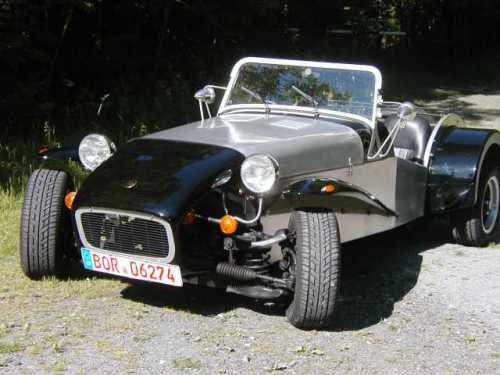
I bought the car just a few days ago and last sunday I took the train to Wesel (some 80 miles away from Soest) to drive the car "home". My tour was an amazing experience, we had really beautiful weather and the Locust has absolutely no technical problems and is in good condition (only some minor cleaning job, change of lightbulb, and so on). I love it from the start !
The last preowner is a car collector, and it seems that he treats his "babies" allright !
In the next few days I'm unfortunately a bit busy with my work, but I'll take a few days off from July 1. It goes without saying that I'll take a VERY close look at the car then and will probably make a lot of miles in my surrounding.
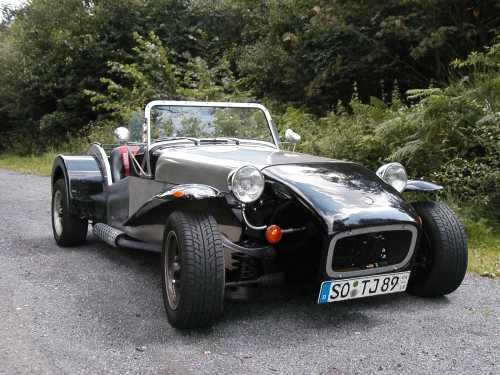
Unfortunately I don't have ANY UK-documents. (That would be perfect...) The only way to find out who in fact built the car is to get in contact with the very first owner. I've got the adress from the registration document, but I haven't been successful yet, he probably moved to another city. But I'll continue.... Fortunately I have the first German registration document and my car doesn't have too many preowners. (If a car has e.g. 6 preowners, the registration document will be interchanged with a new one, that only contains information, HOW MANY preowners the first document listed, not WHO they were.) But when I remember it correctly, there is a stamp in the registration document saying the car has been imported. Maybe it's the only one in Germany (??).
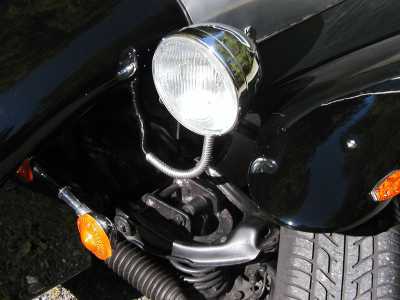
Indeed the German TUV is the major difficulty to run a car like this in Germany. In the past years, they invented a lot of "funny" ideas how a car should be. Mainly because of the "typical German way" of over-regulating just about everything our cars nowadays have lost almost all what makes driving fun. Nearly every bolt head of my Locust has to have a special permit by the TUV. But someone must have been successful ... It also depends very much on the employee who does the registering. It is e.g. extremely complicated, to change (or tune) an engine because you have to go through a so called "exhaust certificate" to get the permission to drive. This is done on a special roller test bench (measuring the chemical composition of the exhaust gas during a simulated tour for city / overland / motorway conditions) and will cost up to some thousands of pounds (!!), depending on car model, year and so on.
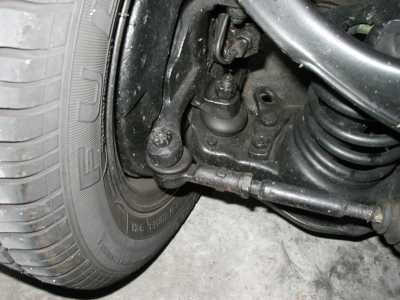
This is in fact one of the reasons, why I'm looking for as much information as possible. I haven't found very much about the 2-Liter engine in my car, most of the Locusts seem to have the 1300 or 1600ccm engines. First I have to discover all numbers and production marks. It could be a Ford Pinto or Sierra engine, but I'm not sure how to identify these. My car is Right Hand Drive and due to that engine, the exhaust system is on the right side. (perfect for winter time, don't need a heating system ;-), sitting right besides the first silencer.) Behind the first silencer ther is a tube system leading through the rear right wheelhouse to the rear end of the car.
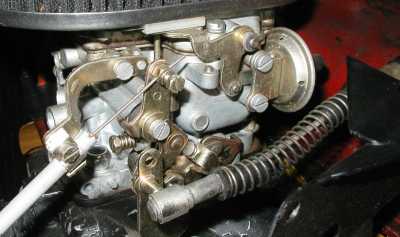
The single Weber carburettor will be examined next Friday. It is standing upright and not lying horizontally like the double Weber 40 systems in many Seven cars. I'll sure take some photos with the digicam. In the registration document 74 kW are stated, around 100 bhp, but maybe someone did some extra work because the car runs just fine.
All instruments are VDO Germany, production codes are dated end of 1989 to mid of 1991. Speed indicator shows mph and also (smaller) km/h.
I found out some more things about my car:
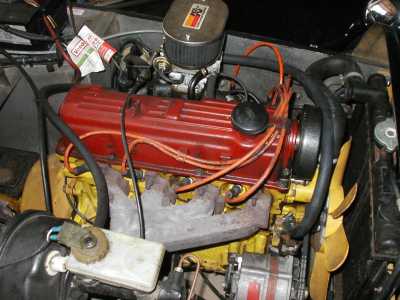
The engine is marked with an engine number beginning with TJ. Rest of the marks are numbers (TJ 35803 ??), but I have to
scratch off the yellow paint at that area, the numbers are almost unreadable. Maybe I could get more information
with the help of these nubers. I have the same "paint-problem" with the engine code, all is covered with the
yellow paint. But it's definitely a pinto engine. The Weber carb is probably a DGV, I'll check that in the
next few days.
The gear box seems to be a Ford "Type 9".
I am still not sure about the exact type of my car. On your website (enthusiasts club) I found some very good
information about T&J. According to this information, my car may also be a Hornet. When I understood it
correctly, T&J offered the Hornet as a slightly bigger alternative to the Locust, mainly with Cortina donor
parts and with either a 1600 ccm or 2000 ccm engine. But I didn't find out from what date onwards they
produced the Hornet(?). How can you separate a Hornet from a Locust ? The hornet is obviously still produced by
BWE (?) and maybe a lot of the parts fit ...
Anyways I definitely have a Cortina rear suspension and axle as shown on your Cortina picture, 2 pressed steel trailing arms, seperate shock absorbers and coil springs, no panhard rod. Front suspension is Cortina too. Are the T&J front suspensions still available in UK ? What other Ford models had the same brake system, it will perhaps be a little difficult to get Cortina parts in Germany :-( and I don't know, how long my brake parts will last.
I'll have to do some research work ...
.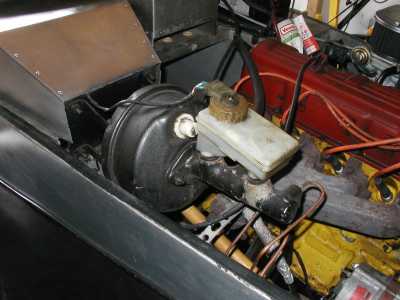
All details let me think that I do have a Hornet here. I assume these were also never produced as factory built new cars, but were usually sold as a kit, like the Locust ? Have T&J produced factory demonstrators ? I haven't been successful yet to find the first German owner, but I think, the car was imported to Germany "as is" and not as a kit.

Fortunately we have had a wonderful, sunny October and I did a lot of 'after work tours' with my Hornet. Since the end of October I'm not allowed to drive because I have a season licence from April to October. So the Seven is sitting in the garage, waiting desperately for springtime. When I've got the time I work on the car now. Recently I found out that there is a Kent cam FR21 in my 2.0 OHC, should produce about 20 horsepowers 'extra fun'. It looks like new, no wear visible, all in very good condition !
Frank
| 
|



